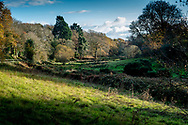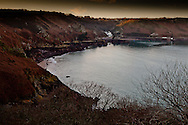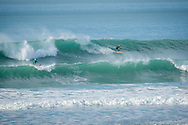

By Ruth Le Cocq
Ways of protecting and enhancing Jersey’s natural environment, both on land and offshore, in the face of climate change and human habitation are the focus of a recently-published Government of Jersey assessment.
The 245-page ‘Jersey Integrated Landscape and Seascape Character Assessment (ILSCA)’ gives guidance to help set future planning policies ahead of the publication of the Island Plan in 2025. It provides comprehensive information about Jersey’s landscape and seascape and how it has evolved and adapted to natural and manmade challenges.
Minister for the Environment Deputy John Young said the report, as well as others, will support work currently being carried out on the Island Plan and uphold recommendations to ‘protect, manage and plan’ for the future.
‘Despite its small size we all know Jersey is special in so many ways,’ he said. ‘We have an incredibly diverse range of habitats – our countryside, coast, offshore reefs and surrounding waters – which all inspire us every day and remind us how lucky we are to call Jersey our home.’
He highlighted that the environment is vital to the quality of life of Islanders and how important it is to ‘defend it from inappropriate development’.
The £35,000 study, prepared by Fiona Fyfe Associates, updates the 1999 Jersey Countryside Character Appraisal. It includes the entire Bailiwick and, for the first time, extends to 12 miles offshore, thus incorporating the marine environment and the Island’s territorial limits.
Divided into five parts, ILSCA gives insights into ‘the story of Jersey’s landscape and seascape’ starting with the geology of the Island and explaining how its natural environment has evolved since humans first lived in caves overlooking a broad plain crossed by rivers and occupied by roaming herds of animals. It also contains detailed maps and profiles of different rural and coastal areas.
It highlights the challenges facing the Island as a result of climate change including hotter, drier summers, milder wetter winters and more frequent and intense storms thus increasing the risk of flooding and coastal erosion.
‘Some plant, tree and animal species which are currently at the limit of their ranges, or which are very sensitive to changing conditions, may not survive. Climate change will impact on crop choice, potentially affecting the appearance and character of rural areas. It will also provide suitable conditions for a range of tree pests and diseases, with oak and ash trees particularly vulnerable. Marine areas will experience a change in sea temperatures, water acidity and water circulation patterns which are likely to impact on the marine environment and its habitats,’ it states.
The study says Jersey’s growing population and the subsequent demand for housing will increase the amount of light pollution which has a detrimental effect of animal behaviour.
It mentions how the marine environment is being affected by shellfish farming and offshore tidal and wind energy projects, and how farmers now sell to potato merchants rather than retailers requiring larger storage sheds. A decline in horticulture has resulted in empty glasshouses and increasing commercial horse livery and horse grazing mean fields are sometimes subdivided into smaller paddocks with ‘visually intrusive’ white tape electric fencing.
It is believed that the report will be of particular interest to landowners, conservation organisations and community groups.

The report can be read on: www.gov.je/SiteCollectionDocuments/Planning%20and%20building/201022%20R%20Island%20Plan%20Review%20Preferred%20Strategy%20Report%20FINAL.pdf




